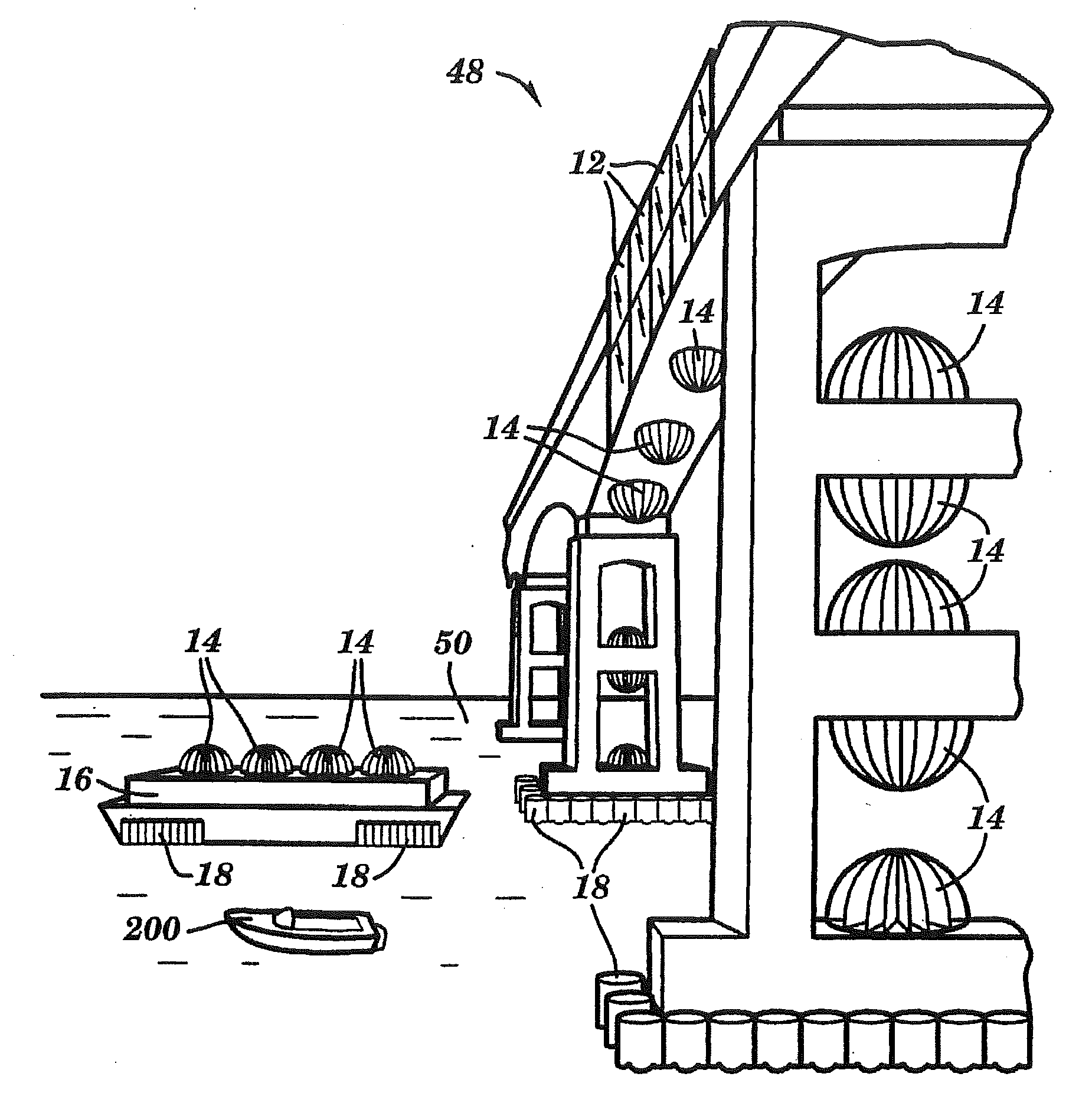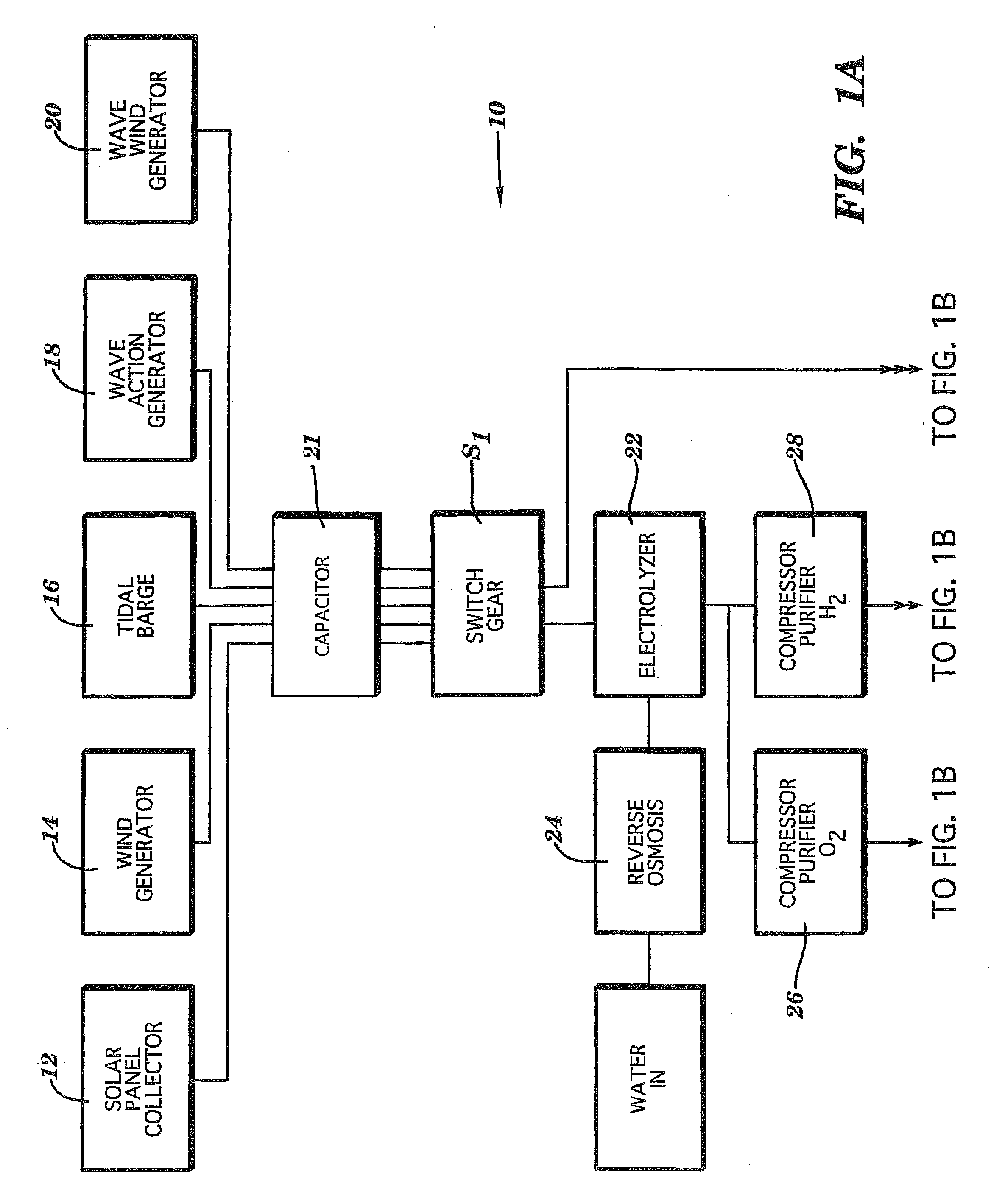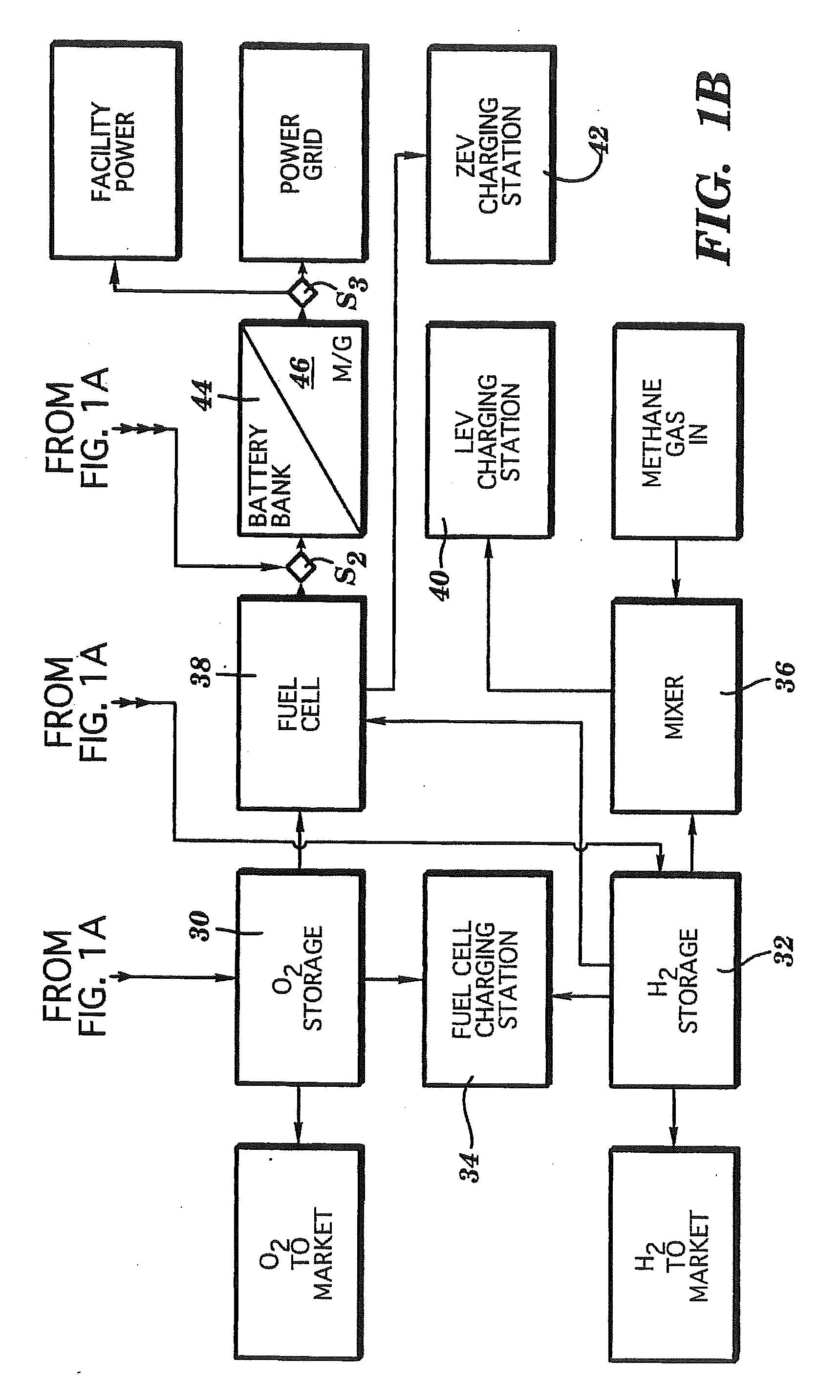Facility for refueling of clean air vehicles/marine craft and generation and storage of power
a technology for clean air vehicles and marine vessels, applied in the field of offshore facilities, can solve the problems of large cost, many problems to be solved, and no broad market for electricity generation,
- Summary
- Abstract
- Description
- Claims
- Application Information
AI Technical Summary
Problems solved by technology
Method used
Image
Examples
Embodiment Construction
1. Definitions
[0041]Certain definitions and acronyms will be referred to throughout the remainder of this discussion. A clean air vehicle (CAV) and marine craft is defined as a vehicle which is not fueled with conventional fossil fuels, e.g. gasoline or diesel petroleum products. Vehicles which use ethanol or methanol, or any “clean-burning” additive are also eliminated because these fuels are regionally available at conventional service stations. CAVs and marine craft may be divided into three classifications: hybrids, low-emission (LEV) and zero-emission (ZEV) types. Hybrid vehicles are those which are fueled by a combination of gasoline and either compressed natural gas (CNG) or liquified natural gas (LNG), natural gas being used in urban areas and the gasoline in suburban areas where refueling facilities for the natural gas are rarely available. Distinctively, LEVs are those powered by a combination of hydrogen and methane or natural gas called Hythane (5%-10% hydrogen—currently...
PUM
 Login to View More
Login to View More Abstract
Description
Claims
Application Information
 Login to View More
Login to View More - R&D
- Intellectual Property
- Life Sciences
- Materials
- Tech Scout
- Unparalleled Data Quality
- Higher Quality Content
- 60% Fewer Hallucinations
Browse by: Latest US Patents, China's latest patents, Technical Efficacy Thesaurus, Application Domain, Technology Topic, Popular Technical Reports.
© 2025 PatSnap. All rights reserved.Legal|Privacy policy|Modern Slavery Act Transparency Statement|Sitemap|About US| Contact US: help@patsnap.com



